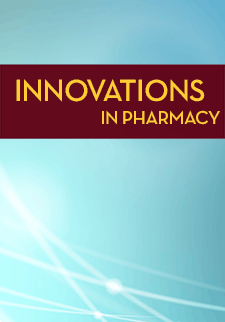Effect of an Innovative Immunization Practice Model to Improve Population Health: Results of the Project IMPACT Immunizations Scaled Demonstration
Benjamin M. Bluml
Research and Innovation, APhA Foundation, Washington, DC
Kelly A. Brock
KB Pharmacy Solutions, Inc., Tustin, CA
William R. Doucette
Health Policy, University of Iowa, Dept of Pharmacy Practice and Science, Iowa City, IA
John D. Grabenstein
Vaccine Dynamics, Easton, MD
Nicole Scovis
Clinical Pharmacy Innovation Services, LLC, Tucson, AZ
DOI: https://doi.org/10.24926/iip.v14i2.5454
Keywords: Pharmacy, pharmacist, vaccine, vaccination, diabetes, cardiovascular disease
Abstract
Background: U.S. adult vaccination rates remain low. Community pharmacists have skills and opportunity to improve this shortcoming. This study sought to evaluate an innovative practice model on identification of unmet vaccination needs and their resolution.
Methods: This prospective, multi-site, multi-state, observational study was conducted in 22 community pharmacy practices in Iowa and Washington. Adults receiving influenza vaccination, medication therapy review, prescriptions for diabetes or cardiovascular disease, or another clinical encounter with a participating pharmacist from December 2017 through November 2019 were included. Pharmacists reviewed vaccination forecasts generated by clinical decision support technology based on their state immunization information system (IIS) to identify unmet vaccination needs, educate patients, and improve vaccination rates. The primary outcomes were numbers of vaccination forecast reviews, patients educated, unmet vaccination needs identified and resolved, and vaccinations administered. Secondary outcomes included numbers of vaccination declinations; times a forecasted vaccine was not recommended because a contraindication was identified by the pharmacist; and times the patients declined a forecasted vaccine due to self-reported vaccination despite lack of documentation in the state IIS. Descriptive statistics were calculated.
Results: Pharmacists reviewed vaccination forecasts for 6,234 patients. The vaccination forecasts predicted there were 11,789 vaccinations needed (1.9 per person). 6,405 of the 11,789 unmet vaccination needs (54.3%) were fulfilled during the study period, including 60% on the same day. Of the forecasted needs, 1,085 (9.2%) were found to be previously administered and 59 (0.5%) contraindicated. The remaining patients received information about their personal vaccination needs and recommendations to be vaccinated.
Conclusion: Availability of vaccination histories during patient encounters allowed pharmacists to identify and resolve adult vaccination needs in independent and chain community practice settings.



